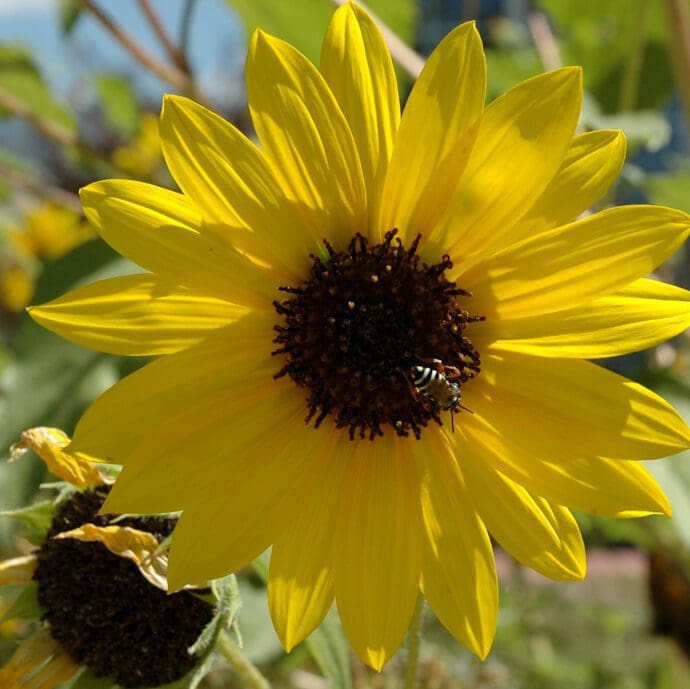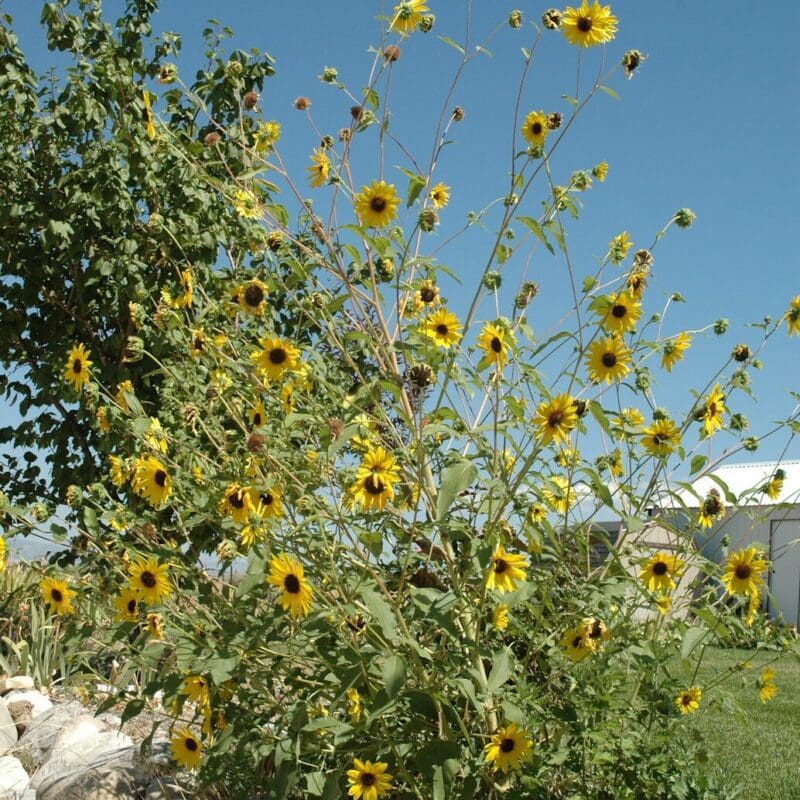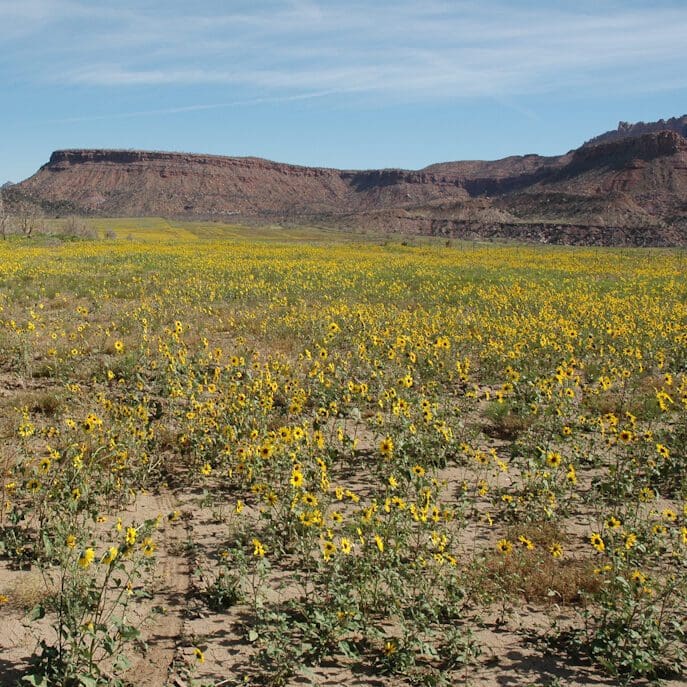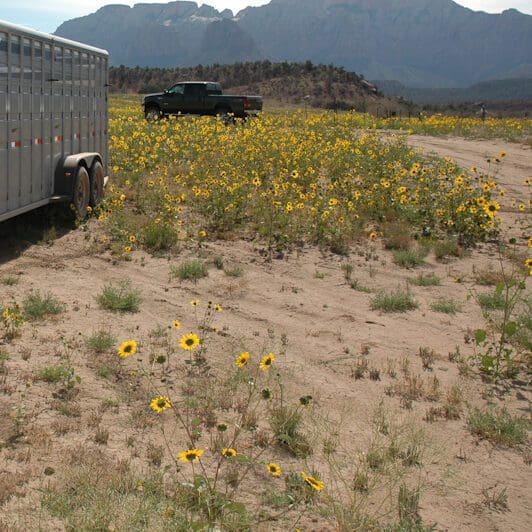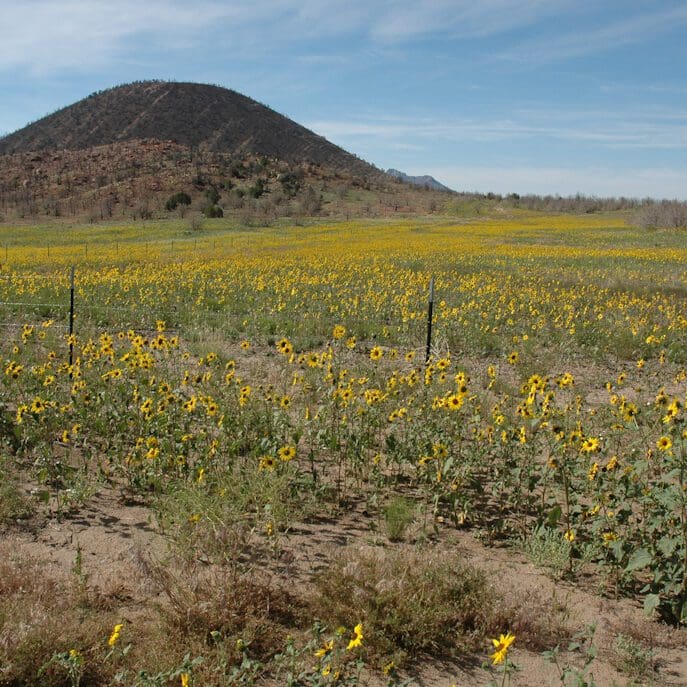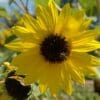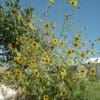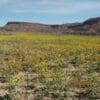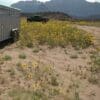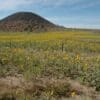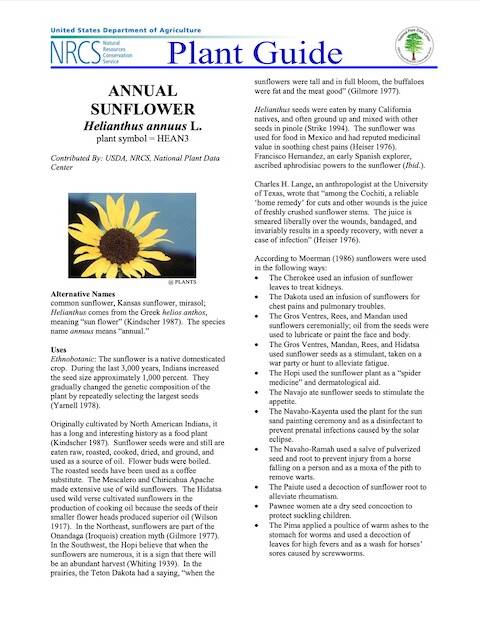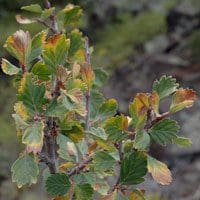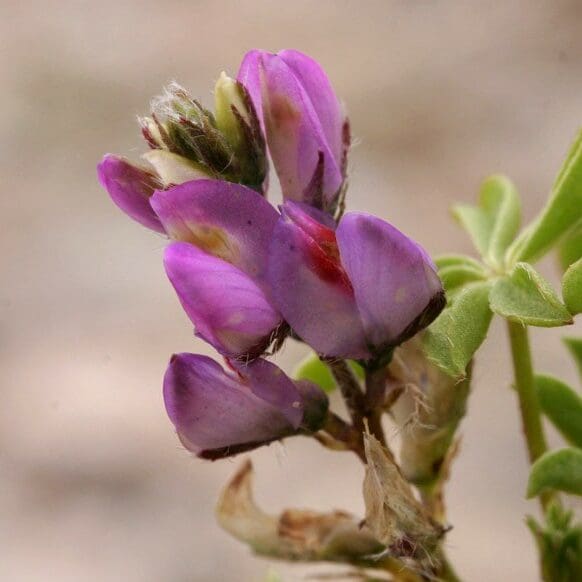Annual Sunflower
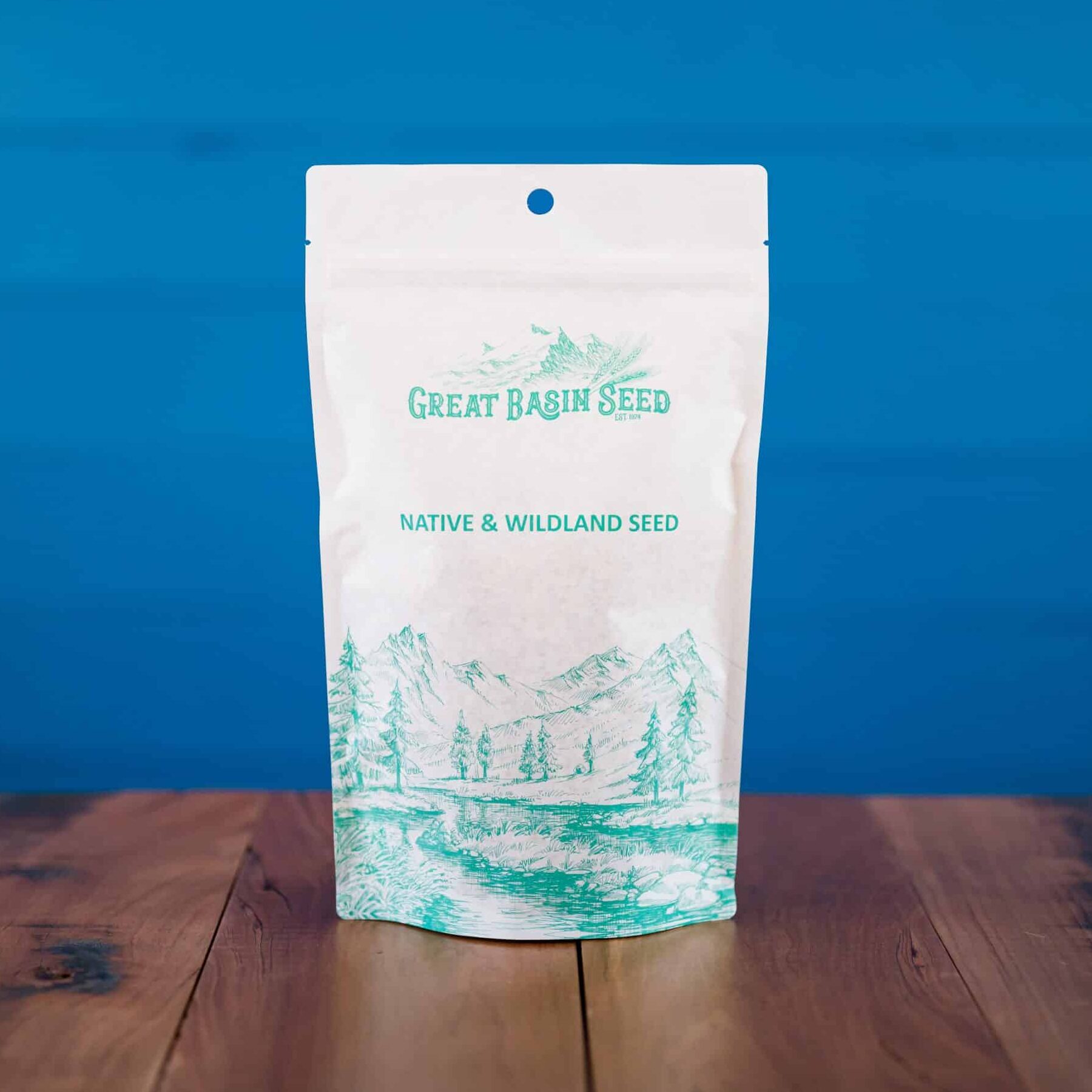 $1.90 – $14.95
$1.90 – $14.95 - Scientific name: Helianthus annuus
- Native, annual sunflower
- Widespread throughout western states
- Commonly occurs in open fields, roadsides
- Requires full sun
- Not to be confused with large, cultivated, edible varieties

Min. to Max. Annual Precipitation
84in.
Average Max. Height
Fun Fact:
Sunflowers track the sun. Young plants exhibit heliotropism, turing their heads from east to west during the day. This boosts photosunthesis and growth. Almost like they are sunbathing in the warmth of the sun.
General Description:
Annual Sunflower (Helianthus annuus) is common and widespread. It is a native sunflower and, in the case of many varieties, a domesticated crop. In some areas, it is so prolific it is considered a roadside weed. Despite its “weedy” reputation to some.
Annual sunflower is common in open sites in many different habitats throughout North America, southern Canada, and Mexico. Annual sunflower should not be confused with the large, cultivated, edible varieties. It is considered an open land species, generally on moist soils, but it can survive high heat and periods of drought.
Sunflower stalks have been used as fuel, fodder for livestock, food for poultry, and ensilage. In the Soviet Union, after the dried flower stalks have been used for fuel, the ashes are returned to the soil. The seed hulls could be used for “litter” for poultry or returned to the soil or composted. A few years ago, it was found that the hulls could be used in fuels. The hulls could be used in fuels. Today the hulls are used in the Soviet Union in manufacturing ethyl alcohol and furfural, in lining plywood, and in growing yeast. The stems have been used as a source of commercial fiber. The Chinese have used this fiber for the manufacturing of fabrics. Other countries are experimenting with the use of fiber in paper.
The name “Helianthus” comes from the Greek helios anthos, meaning “sun flower”, the species name annuus means “annual.” Originally cultivated by North American Indians, it has a long and interesting history as a food plant. Sunflower seeds were and still are eaten raw, roasted, cooked, dried, and ground, and used as a source of oil. The roasted seeds have been used as a coffee substitute. Numerous tribes from Canada to Mexico have used them for food, as a die and for medicine. They are often cited in folklore and storytelling. In the Southwest, the Hopi believe that when the sunflowers are numerous, it is a sign that there will be an abundant harvest. In the prairies, the Teton Dakota had a saying, “when the sunflowers were tall and in full bloom, the buffaloes were fat and the meat good”
Uses:
- Reclamation
- Wildlife habitat improvement
- Pollinators
Planting Conditions:
It is a species of prairies and other grasslands, old fields, roadsides, railroad rights-of-way, savannas, and forest edges.
Sunflowers need full sun. Irrigation is required as the plant establishes. Roughly about 1 to 1.5 inches a week during the early stages of growth but be mindful not to over water. Seed evenly on the surface and lightly rake the seed in or gently press the seeds into the surface of the soil. Then cover the seeds with a thin layer of dirt.
Annual Sunflower prefers well drained soils but is adaptable. It tolerates a wide range of pH but ideally 6.0-7.5. Best planting times is spring to fall. In the spring time make sure to plant after last frost date typically once soils reach about 50 degrees. Annual sunflower is drought tolerant once it is established.
Establishment:
Annual Sunflower typically germinates between 7-10 days after being planted. It is quick to establish taking about 6 weeks to fully establish
Seeding Rate:
Broadcast: 15-20 pounds per acre
***Click the “Quick Plant Facts” tab above for more information.
Native Sunflower
Annual Sunflower NRCS Plant Guide
Annual Sunflower NRCS Plant Guide
PDF Version of NRCS Plants Guide
Prepared By: Michelle Stevens formerly USDA, NRCS, National Plant Data Center
Species Coordinator: M. Kat Anderson USDA, NRCS, National Plant Data Center c/o Environmental Horticulture Department, University of California, Davis, California
Quick Plant Facts
| Common Name: | Common Sunflower, Wild Annual Sunflower |
|---|---|
| Scientific Name: | |
| Origin: | |
| Lifespan: | |
| Plant Type: | |
| Seed Count | 58,000 seeds/lb. |
| Zone Map | comingsoon.gif |
| Growth Height: | |
| Min. Precipitation: | |
| Planting Rate: | |
| Best Time to Sow: | |
| Max Sowing Depth: | |
| Root Form: | |
| Growth Season: | |
| Sun & Shade Tolerance: | Full Sun, Shade Intolerant |
| pH Tolerance: | |
| Hardiness Zones: | |
| Select a Package Size and Quantity | 1 oz. Envelope, 4 oz. Pouch (0.25 lbs.), 8 oz. Pouch (0.50 lbs.), 1 lb. (by the pound) |
